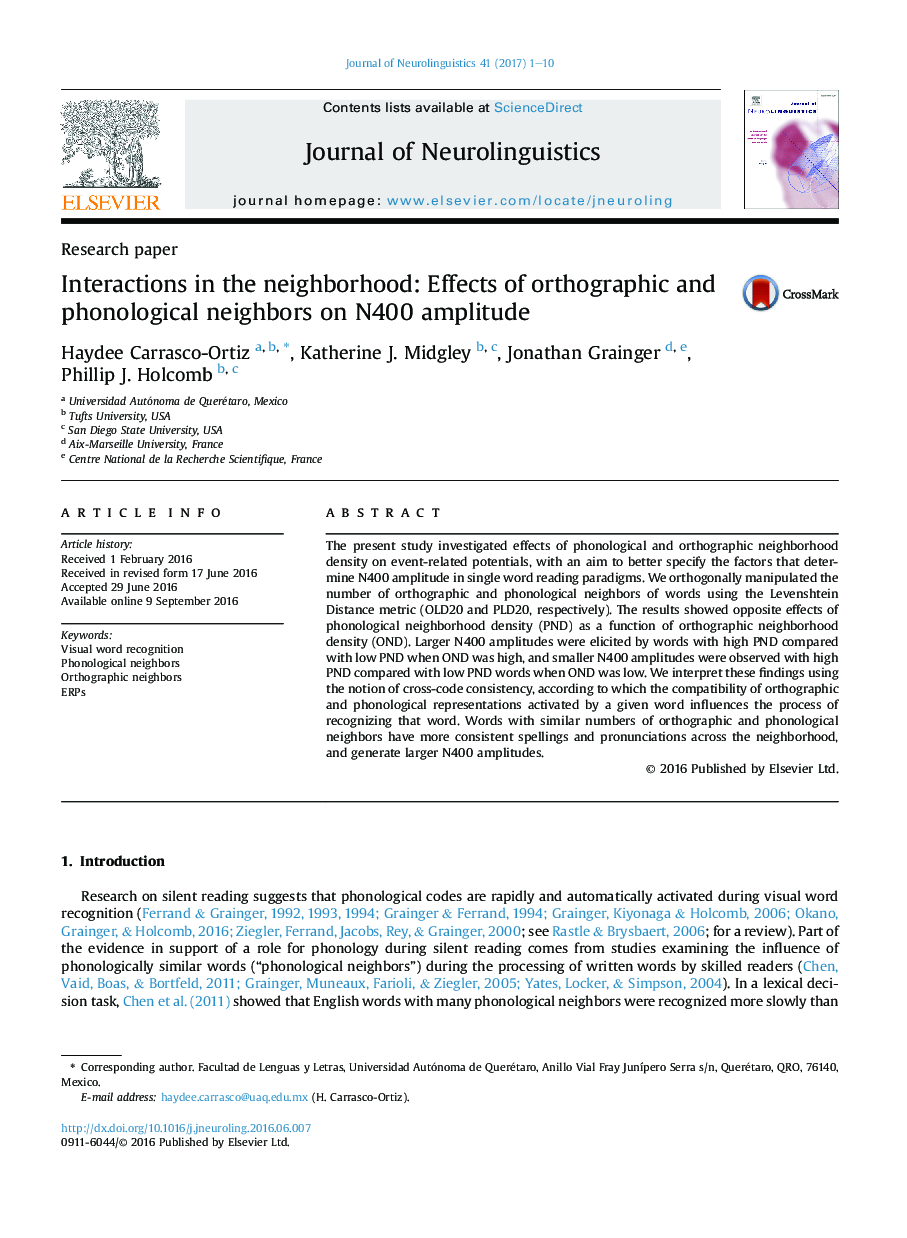| Article ID | Journal | Published Year | Pages | File Type |
|---|---|---|---|---|
| 5039264 | Journal of Neurolinguistics | 2017 | 10 Pages |
â¢Effects of phonological and orthographic neighborhood density on visual word recognition.â¢The number of neighbors does not determine the N400 amplitude.â¢Consistency in the spellings and the pronunciations across the neighbors generate larger N400's.â¢N400 is determined by the strength of lexical activity generated by a word and its neighbors.
The present study investigated effects of phonological and orthographic neighborhood density on event-related potentials, with an aim to better specify the factors that determine N400 amplitude in single word reading paradigms. We orthogonally manipulated the number of orthographic and phonological neighbors of words using the Levenshtein Distance metric (OLD20 and PLD20, respectively). The results showed opposite effects of phonological neighborhood density (PND) as a function of orthographic neighborhood density (OND). Larger N400 amplitudes were elicited by words with high PND compared with low PND when OND was high, and smaller N400 amplitudes were observed with high PND compared with low PND words when OND was low. We interpret these findings using the notion of cross-code consistency, according to which the compatibility of orthographic and phonological representations activated by a given word influences the process of recognizing that word. Words with similar numbers of orthographic and phonological neighbors have more consistent spellings and pronunciations across the neighborhood, and generate larger N400 amplitudes.
